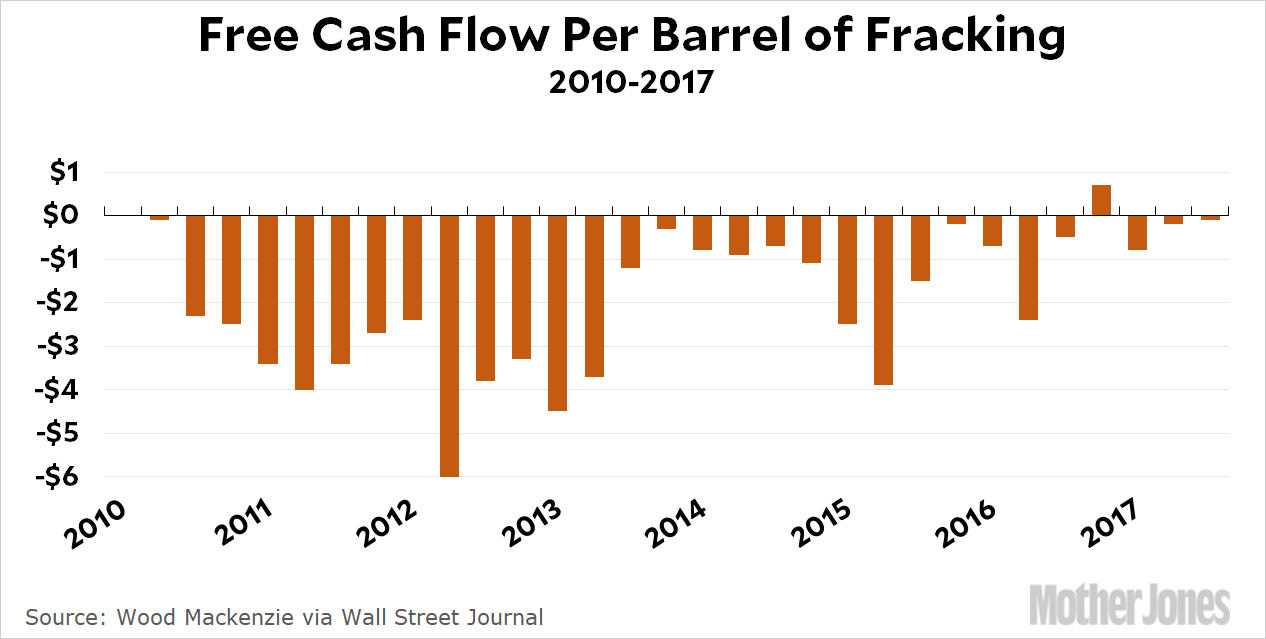I learned something new today. Every year, fracking operations in the United States produce more than a billion barrels of oil and gas. And we’re basically just giving it all away:

That’s right: the whole industry is a huge money sink. If you invested $100 in the S&P 500 a decade ago, you’d have $180 today. If you invested $100 in fracking, you’d have…
$69.
The Wall Street Journal explains what’s going on:
Returns from individual wells can be good, but shale wells tend to pop online with a gush and then peter out fairly quickly. That has meant operators sink profits back into more new wells that can take another two years to become profitable, with shareholders told to hang on for a payday.
“The mañana never quite materializes,” Mr. McMahon says.
One factor sapping profits is that many shale producers paid extravagantly to lease land for drilling in places such as the Permian Basin in Texas and New Mexico. Many operators drop out those land-acquisition costs from the break-even-price calculations they tout to shareholders. While most shale operators claim they have hundreds, if not thousands, of well locations they say can muster a 10% profit margin or more, the number of in-the-money wells is far smaller when costs for land, pipelines and other infrastructure and overhead is factored in.
Remind me again why we’re doing this? Fracking is bad because it releases methane; bad because it destabilizes fault lines; bad for pumping poisonous dreck into the ground; and of course, bad for climate change. But all along I figured that at least greed could explain why we put up with this. Greed explains a lot of odious human behavior. But what’s the point of frantically digging up all our fossil fuel resources now now now if no one is even making any money from it?















